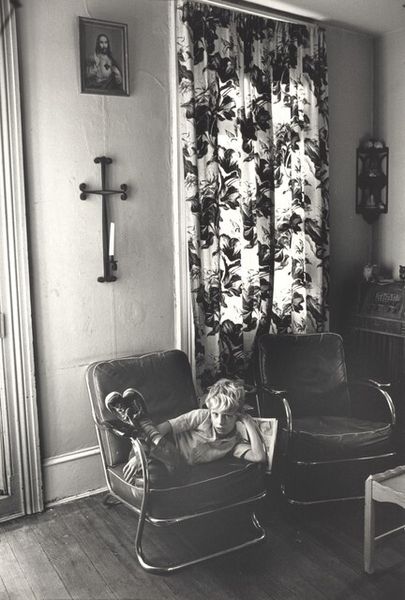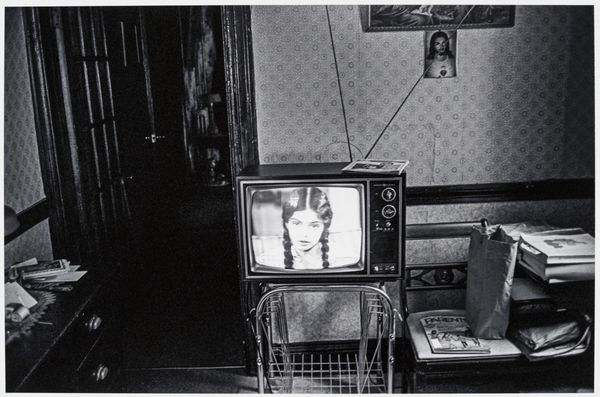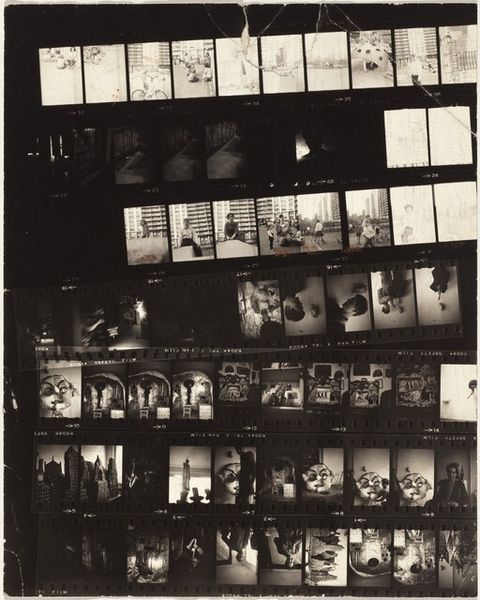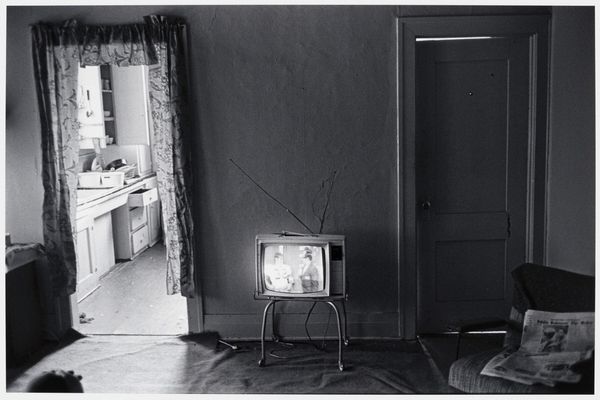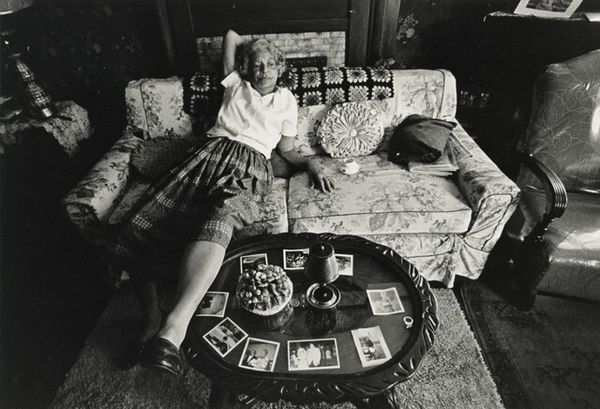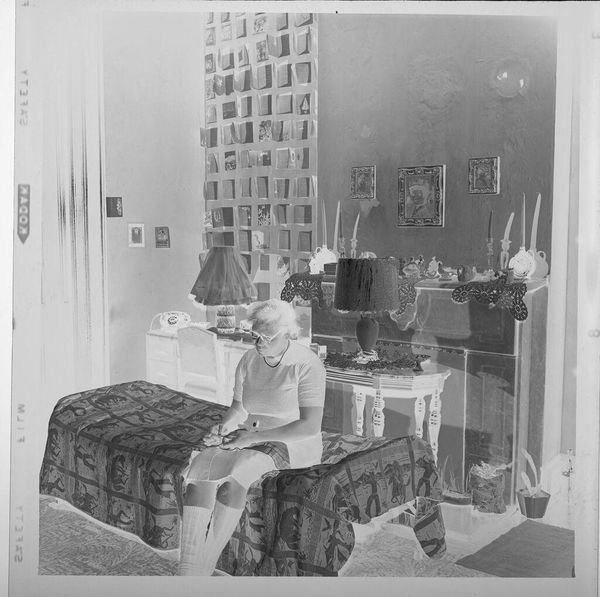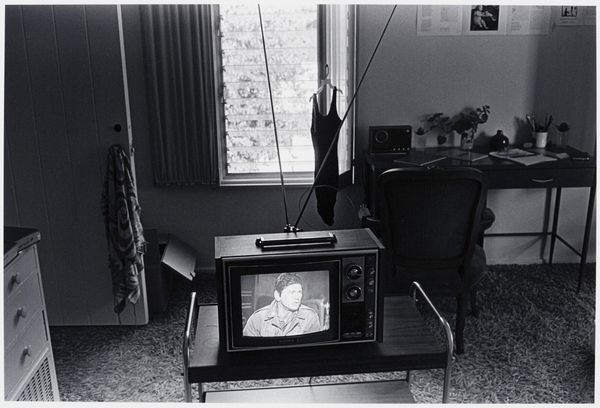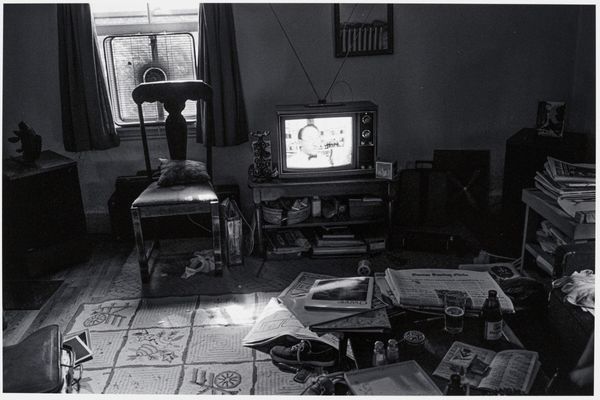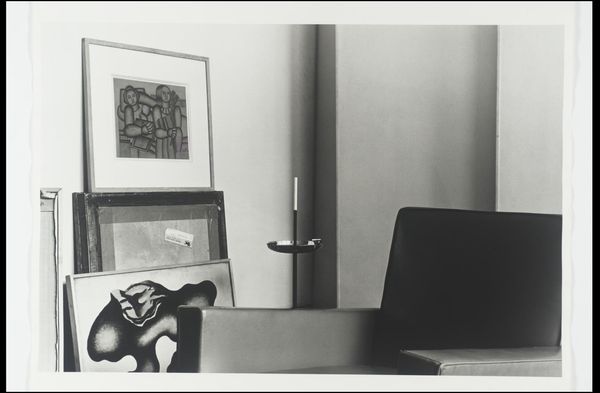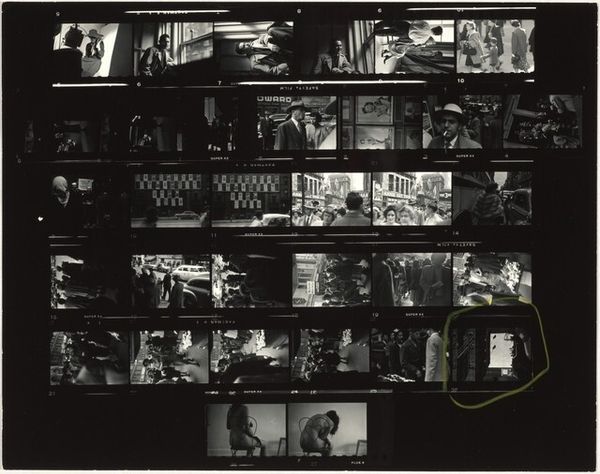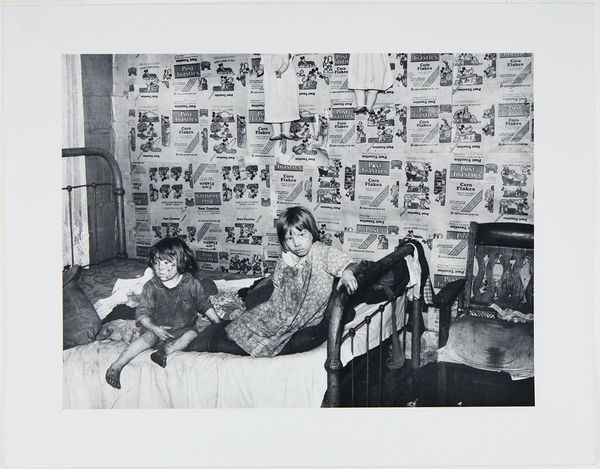
photography, gelatin-silver-print
#
portrait
#
black and white photography
#
social-realism
#
photography
#
black and white
#
gelatin-silver-print
#
monochrome photography
#
monochrome
#
monochrome
Dimensions: image: 18 x 17.5 cm (7 1/16 x 6 7/8 in.) sheet: 25.2 x 20 cm (9 15/16 x 7 7/8 in.)
Copyright: National Gallery of Art: CC0 1.0
Curator: This gelatin-silver print, simply titled "Untitled (Lower West Side series)," was captured by Milton Rogovin in 1984. Immediately, I'm struck by the overwhelming density of photographs adorning the wall. It feels intimate, like stepping directly into someone's personal history. Editor: The geometry of the photo groupings against the curtained wall—and the careful alignment of the subject at the center, seated—all bring a structured focus to the composition. Note how his posture mimics that of someone being enthroned! The textures, too, demand a closer look; the starkness of the black and white only highlights the intricate layers of fabric, paper, and the plant leaves. Curator: Absolutely. It's tempting to read this through a lens of power, especially considering Rogovin's focus on marginalized communities. His life work became this decades-long portrait series about working-class families. Rogovin wasn’t just documenting; he was bearing witness. This man, framed by his family's visual presence, resists invisibility. We are invited into a domestic sphere. Editor: Semiotically, we’re dealing with image saturation. These photographs function as signs, but the profusion weakens their singular impact even as it creates another level of narrative. The viewer must engage the larger statement about history. Curator: I see it instead as each photo holding a story that contributes to a larger history, to the larger story that the seated figure embodies. What’s crucial is how Rogovin is giving agency. The subject’s confident, direct gaze subverts any potential objectification, especially when coupled with the familial intimacy of the images. Editor: Still, black and white photography, particularly documentary, has inherent limitations—it always runs the risk of simplifying context and reifying itself in stark contrasts. What is intentionally framed and lit must always contend with external interpretation. Curator: Yes, and it's up to us to acknowledge the complexities present within the historical context. The subject resides in the Lower West Side and is situated amid economic shifts. Rogovin offers the viewers a glimpse, albeit curated, into a lived reality marked by both challenges and deep familial bonds. His photograph is a political act, resisting erasure. Editor: Looking at it this way expands how the image might mean. The technique almost creates its own sort of language…it's less that it needs translation so much as time and attention given to its individual forms. Thank you for guiding that analysis. Curator: It’s through collective dialogues that art truly reveals its purpose, inviting continued interpretation for anyone engaging.
Comments
No comments
Be the first to comment and join the conversation on the ultimate creative platform.
